
Emergency medical services (EMS), also known as ambulance services ""pre-hospital care"" or paramedic services, are emergency services that provide urgent pre-hospital treatment and stabilisation for serious illness and injuries and transport to definitive care. They may also be known as a first aid squad, FAST squad, emergency squad, ambulance squad, ambulance corps, life squad or by other initialisms such as EMAS or EMARS.
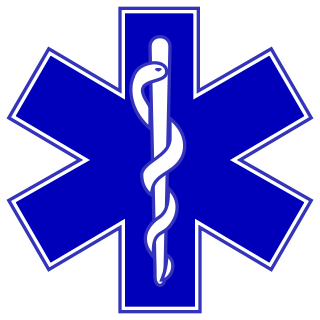
An emergency medical technician is a medical professional that provides emergency medical services. EMTs are most commonly found serving on ambulances and in fire departments in the US and Canada, as full-time and some part-time departments require their firefighters to at least be EMT certified.

A certified first responder is a person who has completed a course and received certification in providing pre-hospital care for medical emergencies. Certified individuals should have received much more instruction than someone who is trained in basic first aid and cardiopulmonary resuscitation (CPR) but they are not necessarily a substitute for more advanced emergency medical care rendered by emergency medical technicians and paramedics. First responders typically provide advanced first aid level care, CPR, and automated external defibrillator (AED) usage. The term "certified first responder" is not to be confused with "first responder", which is a generic term referring to the first medically trained responder to arrive on scene and medically trained telecommunication operators who provide pre-arrival medical instructions as trained Emergency Medical Dispatchers (EMD). Many police officers and firefighters are required to receive training as certified first responders. Advanced medical care is typically provided by EMS, although some police officers and firefighters also train to become emergency medical technicians or paramedics.

A nontransporting EMS vehicle is a vehicle that responds to and provides emergency medical services (EMS) without the ability to transport patients. For patients whose condition requires transport, an ambulance is necessary. In some cases they may fulfill other duties when not participating in EMS operations, such as policing or fire suppression.

In the United States, the paramedic is an allied health professional whose primary focus is to provide advanced emergency medical care for patients who access Emergency Medical Services (EMS). This individual possesses the complex knowledge and skills necessary to provide patient care and transportation. Paramedics function as part of a comprehensive EMS response under physician medical direction. Paramedics often serve in a prehospital role, responding to Public safety answering point (9-1-1) calls in an ambulance. The paramedic serves as the initial entry point into the health care system. A standard requirement for state licensure involves successful completion of a nationally accredited Paramedic program at the certificate or associate degree level.

Louisville Metro Emergency Medical Services is the primary provider of pre-hospital life support and emergency care within Louisville-Jefferson County, Kentucky. LMEMS is a governmental department that averages 90,000 calls for service, both emergency and non-emergency, each year.
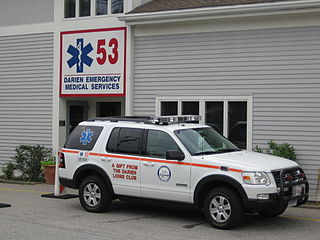
In the United States, emergency medical services (EMS) provide out-of-hospital acute medical care and/or transport to definitive care for those in need. They are regulated at the most basic level by the National Highway Traffic Safety Administration, which sets the minimum standards that all states' EMS providers must meet, and regulated more strictly by individual state governments, which often require higher standards from the services they oversee.
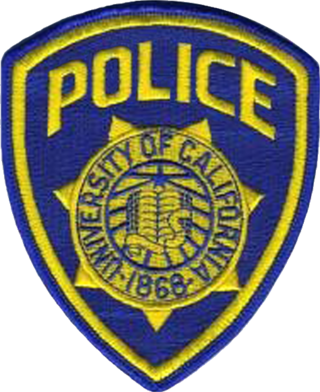
The police departments of the University of California system are charged with providing law enforcement to each of the system's campuses.
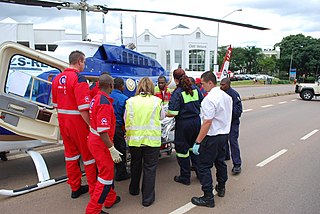
Emergency medical services in South Africa are a public/private system aimed at the provision of emergency ambulance service, including emergency care and transportation to hospital.
Boston Emergency Medical Services provides basic life support (BLS) and advanced life support (ALS) ambulance units throughout the neighborhoods in the city of Boston, Massachusetts, USA. Boston EMS is a public safety agency responding to 911 calls alone or with the Boston Police and/or Boston Fire Departments dependent upon the nature of an incident. The agency employs over 400 emergency medical technicians (EMT) and paramedics.
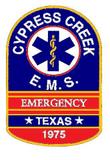
Cypress Creek Emergency Medical ServicesAssociation, also known as Cypress Creek EMS (CCEMS) was a private, non-profit emergency medical service provider for Harris County ESD 11 in North Harris County, within greater Houston, Texas. In 2021, CCEMS declared bankruptcy and operations ceased in mid 2022. In late 2022, the remaining assets, branding, and trademarks were bought by Viking Enterprises, DBA City Ambulance Service. All ambulances in use by CCEMS are Mobile Intensive Care Units (MICU), with at least one Paramedic, making all ambulances ALS units. Cypress Creek EMS provided 911 service in North Harris County, provided bicycle medic teams for special events, provided tactical EMS support for federal, state, and local law enforcement, and operated an accredited educational institution.

The Detroit Fire Department (DFD) provides fire protection and emergency medical services to the U.S. city of Detroit, Michigan.
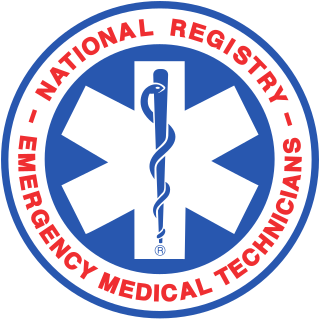
The National Registry of Emergency Medical Technicians (NREMT) is a US based, non-profit certification organization for pre-hospital emergency medical providers that exists to ensure that every Emergency Medical Technician has the knowledge and skills required for competent practice.
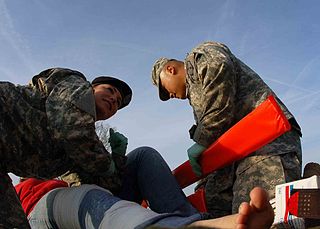
Emergency Medical Responders (EMRs) are people who are specially trained to provide out-of-hospital care in medical emergencies, typically before the arrival of an ambulance. Specifically used, an emergency medical responder is an EMS certification level used to describe a level of EMS provider below that of an emergency medical technician and paramedic. However, the EMR is not intended to replace the roles of such providers and their wide range of specialties.
The Union Volunteer Emergency Squad (UVES) provides emergency services for the Town of Union, New York, USA. It has stations in Endwell, New York; Johnson City, New York; and Endicott, New York.

Emergency Medical Services in Spain (EMS) are public services usually provided by regional Governments.

The Lancaster Volunteer Ambulance Corps, also known as the LVAC & simply as Lancaster Ambulance is a not-for-profit (501c3) EMS agency in Lancaster, New York. The Corps primary response area is the Village & Town of Lancaster, the Village of Depew and the Village & Town of Alden, New York. It also responds to areas via mutual aid agreements and requests for service. LVAC responds 24 hours a day, 365 days a year. The LVAC is a combination EMS agency, having a career staff on duty 24/7 and supplemented by a volunteer staff. Lancaster Ambulance covers a population of about 90,000 people in a geographic area of approximately 83 square miles and responds to over 6,000 EMS requests a year. The Lancaster Volunteer Ambulance Corps is dispatched by the Lancaster Police Department and receives online medical direction through the Erie County Medical Center.

The New York City Fire Department Bureau of Emergency Medical Services is a division of the New York City Fire Department (FDNY) in charge of emergency medical services for New York City. It was established on March 17, 1996, following the merger of the FDNY and New York City Health and Hospitals Corporation's emergency medical services division. FDNY EMS provides coverage of all five boroughs of New York City with ambulances and a variety of specialized response vehicles.

The Penn Medical Emergency Response Team (MERT) is the University of Pennsylvania's student-run volunteer emergency medical services organization, providing care to students, faculty, staff and community members. MERT's primary responsibility is to provide quick-response emergency medical care before Philadelphia Fire Department paramedic units are available to provide patient transport. The secondary purpose of MERT is to provide education to the Penn community, specifically CPR training, First Aid training, and alcohol education.
The Virginia Beach Department of Emergency Medical Services is the 911 EMS provider for Virginia Beach, Virginia. Virginia Beach is the largest city in the United States with a volunteer based EMS system. Since the 1940s Virginia Beach has offered free pre-hospital emergency services through 10 volunteer rescue squads supported by 1,100+ volunteers throughout the city. Virginia beach EMS has also been a leader in a variety of pre-hospital technologies including 12-lead transmission,EZ-IO technology and therapeutic hypothermia,rapid sequence induction and intubation (RSII),video laryngoscope,end tidal CO2 monitoring,S T Elevation Myocardial Infarction (STEMI) and Stroke programs and community CardioPulmonary Resuscitation (CPR),among others. These programs and more have contributed to the 36% cardiac arrest survival rate (2012).
















